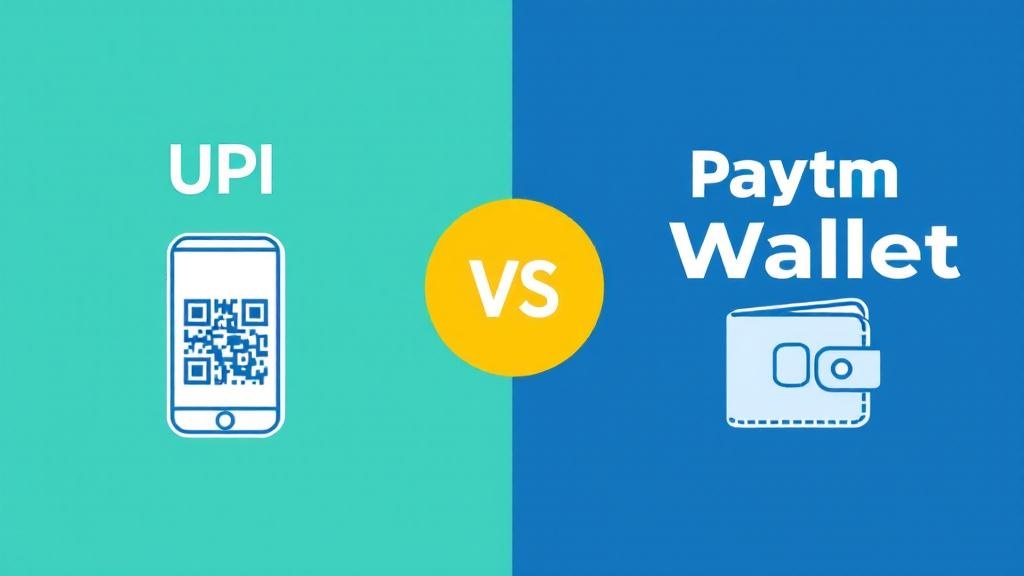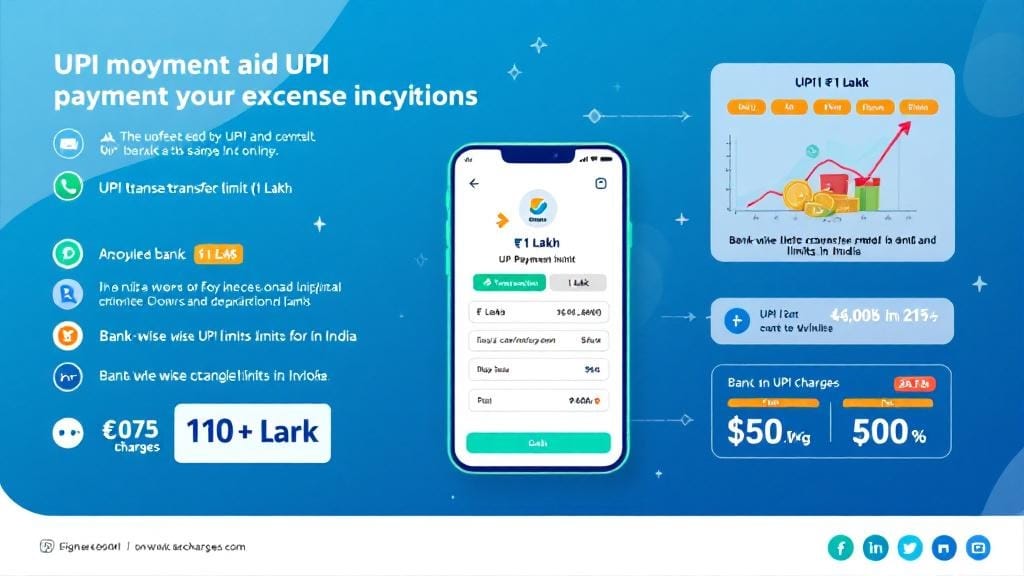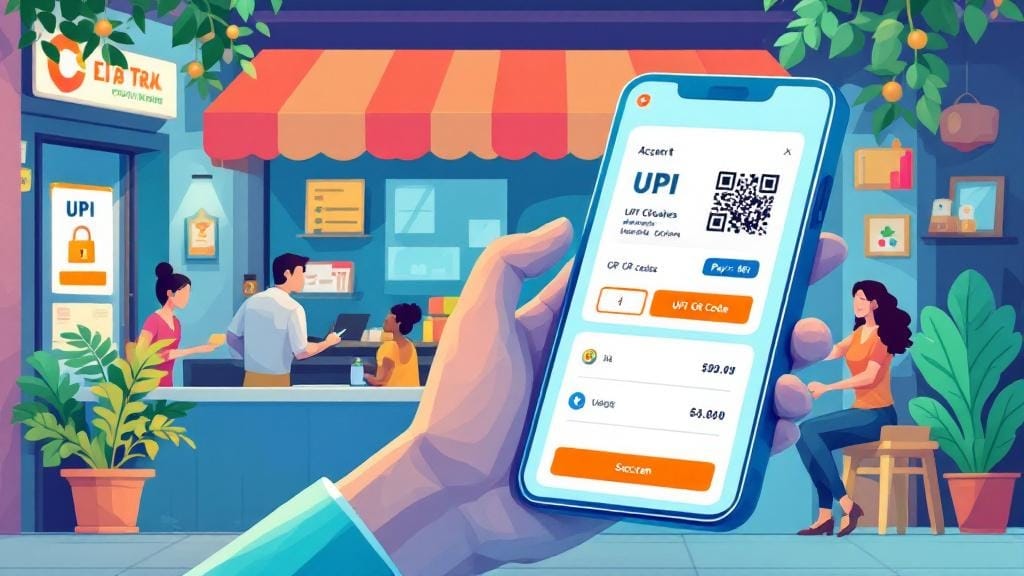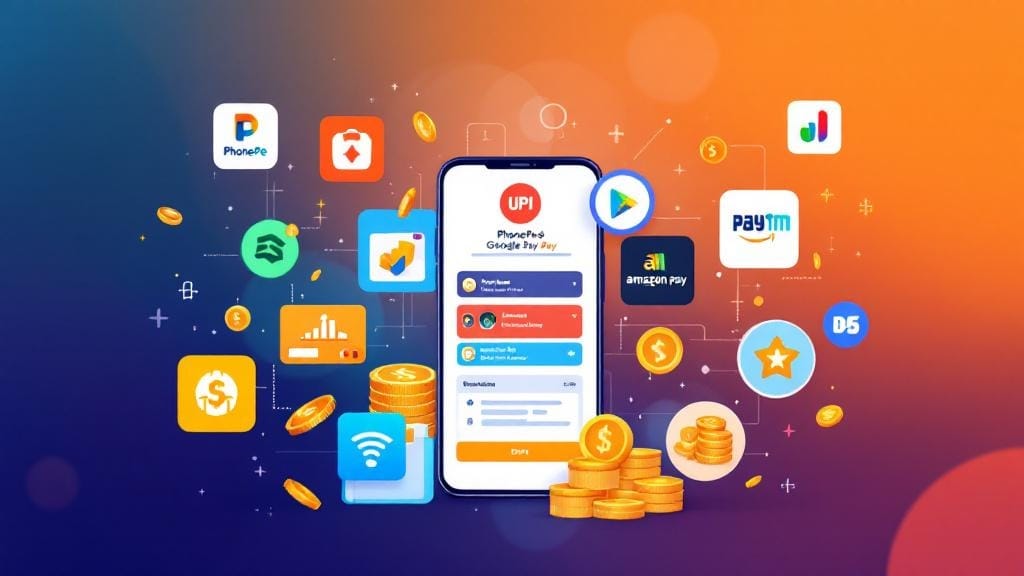In today’s fast-paced digital world, making payments has become easier than ever. With just a few taps, you can pay for goods, transfer money, or settle bills. But when it comes to digital payment systems, two prominent options in India stand out: UPI (Unified Payments Interface) and Paytm Wallet. But what sets these two apart? Which one should you choose? Let’s dive into a comprehensive comparison of UPI vs Paytm Wallet to help you understand the key differences, advantages, and which is better suited for your needs.
What is UPI?
UPI (Unified Payments Interface) is a revolutionary real-time payment system developed by the National Payments Corporation of India (NPCI). Launched in 2016, UPI enables instant money transfers between bank accounts using just a mobile number or a unique identifier called VPA (Virtual Payment Address). With UPI, you can transfer funds between bank accounts 24/7, making it an extremely convenient solution for cashless transactions.
What is Paytm Wallet?
Paytm Wallet, on the other hand, is a mobile wallet service that allows users to store money digitally in their Paytm accounts. This money can be used to make payments, recharge mobile phones, pay bills, and even transfer money to bank accounts. Paytm Wallet works by storing money in your Paytm account, which you can load using your bank account, debit/credit card, or UPI.
UPI vs Paytm Wallet: Key Differences
1. Underlying Technology
UPI: UPI is directly linked to your bank account and allows real-time money transfers between any two UPI-enabled bank accounts.
Paytm Wallet: Paytm works by pre-loading funds into your Paytm Wallet, from where you can transfer money or make payments.
2. User Interface
UPI: UPI is integrated into various apps like Google Pay, PhonePe, and more. You can use any of these apps to make UPI payments, and each one provides a different user interface.
Paytm Wallet: Paytm Wallet is a standalone app with a user-friendly interface, allowing users to perform various functions like paying bills, recharging phones, and transferring funds.
3. Payment Method
UPI: It is linked to your bank account, which means payments are made directly from your bank account without needing any intermediary.
Paytm Wallet: You must first load money into the Paytm Wallet before making payments, essentially using your stored funds rather than directly from a bank account.
4. Transaction Speed
UPI: UPI allows instantaneous fund transfers from one bank to another, which makes it one of the fastest ways to send money.
Paytm Wallet: Paytm Wallet transactions are relatively fast, but it still involves transferring funds from your bank to the wallet first, which can take a few minutes.
Benefits of UPI over Paytm Wallet
No Wallet Balance Needed:
With UPI, you don’t need to store money in a separate wallet; the funds are transferred directly from your bank account. Paytm, however, requires pre-loading of money into the wallet before usage.Direct Bank Transactions:
UPI offers direct peer-to-peer transactions, linking your bank account for faster, more secure transfers. Paytm Wallet relies on intermediaries for fund transfer.Low Transaction Charges:
UPI transactions typically come with zero or minimal charges. In contrast, Paytm Wallet may charge fees for certain transactions, such as wallet-to-bank transfers or adding money to the wallet.Availability Across Platforms:
UPI can be accessed through various apps, which means you can use UPI through apps like Google Pay, PhonePe, and even Paytm itself. Paytm Wallet is limited to the Paytm app.
UPI vs Paytm Charges
One of the most significant factors in choosing between UPI and Paytm Wallet is the cost associated with each service.
UPI: Most UPI transactions are free of charge or have minimal charges for specific cases like peer-to-peer payments through UPI apps. For example, Google Pay or PhonePe do not charge fees for transactions.
Paytm Wallet: While making payments with Paytm Wallet is generally free, it comes with certain charges like:
Loading money into the wallet via debit/credit card.
Withdrawing funds from the Paytm Wallet to a bank account (may attract a small fee depending on the transaction).
UPI vs Paytm for Money Transfer
When it comes to transferring money to someone else, both UPI and Paytm Wallet are efficient. However, their methods differ:
UPI: Directly links to your bank account, making it an ideal option for bank-to-bank transfers. You can send money instantly to anyone with a UPI ID, without needing to go through a wallet.
Paytm Wallet: To transfer money, you must first load money into the wallet. Once loaded, you can transfer funds to other Paytm users or your linked bank account.
Which is Better: UPI or Paytm Wallet?
Both UPI and Paytm Wallet have their unique advantages, and choosing between them depends on your needs:
If you want instant money transfer directly from your bank account with minimal charges, UPI is the better option.
If you prefer a mobile wallet that stores funds for easier payments and transactions, Paytm Wallet may be more suitable.
UPI vs Paytm Wallet in India: Which One Is More Popular?
UPI has gained immense popularity in India, and with good reason. Its integration with multiple apps like Google Pay, PhonePe, and BHIM makes it a flexible, secure, and widely-used payment method. Paytm Wallet, while still widely used, has seen some decline in comparison to UPI due to its limited features compared to UPI-based apps.
FAQs about UPI vs Paytm Wallet
1. What is the difference between UPI and Paytm Wallet?
UPI is a payment interface linked directly to your bank account, allowing instant money transfers. Paytm Wallet stores money within the app for transactions, and you need to load funds before making payments.
2. Which is better: UPI or Paytm Wallet?
UPI is better for instant bank-to-bank transfers with minimal charges. Paytm Wallet is better for users who want to store money in an app for easier transactions.
3. Can I transfer money from Paytm Wallet to a bank account?
Yes, you can transfer money from Paytm Wallet to your linked bank account, but Paytm may charge a fee for this service.
4. What are the charges for UPI transactions?
Most UPI transactions are free or come with minimal charges. However, certain premium services or peer-to-peer transfers may attract a small fee.
5. Can I use Paytm Wallet for payments at any store?
Yes, Paytm Wallet can be used for payments at many stores that support QR code payments or digital wallet payments.
6. Is UPI more secure than Paytm Wallet?
Yes, UPI is linked directly to your bank account, and transactions are secured by two-factor authentication. Paytm Wallet also offers security, but the wallet balance itself could be vulnerable if your Paytm account is compromised.
7. What is the transaction limit for UPI and Paytm Wallet?
The transaction limit for UPI is typically ₹1 lakh per day, depending on your bank. Paytm Wallet limits are generally ₹10,000 for wallet-to-wallet transactions and ₹25,000 for bank transfers.
Conclusion
The choice between UPI vs Paytm Wallet boils down to your specific needs. If you’re looking for instant, low-cost transactions directly from your bank, UPI is the way to go. However, if you prefer a mobile wallet for storing funds and making payments, Paytm Wallet may suit your needs. Both systems offer unique benefits, so it ultimately depends on how you plan to use them.
This blog post provides an in-depth look at UPI vs Paytm Wallet and offers insights into what makes each payment method stand out in the Indian digital payments landscape.








Comments (0)